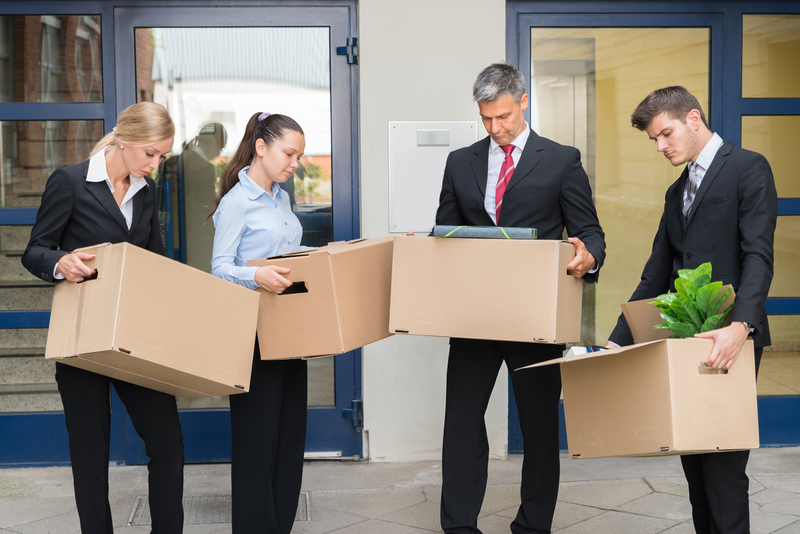Achieve Moving Success with These Bed and Mattress Tips
Posted on 14/06/2025
Achieve Moving Success with These Bed and Mattress Tips
Are you planning a move and concerned about how to transport your valuable bed and mattress? Your bed is the centerpiece of your comfort, and your mattress is an investment in restful sleep. Moving a bed and mattress can be tricky and stressful, but with expert guidance and a few handy tricks, you can ensure a smooth and successful move. In this comprehensive article, we'll provide you SEO-optimized bed and mattress solutions to take the worry out of your next move.
- Why Move Your Bed and Mattress Properly?
- Preparing Your Bed for the Move
- Top Mattress Moving Tips
- Choosing the Right Moving Materials
- Dismantling and Packing the Bed Frame
- Moving the Mattress Safely
- Transporting Your Bed and Mattress
- Reassembling Your Bed After Moving
- Mattress Care Post-Move
- Bonus: Expert Bed and Mattress Moving Advice
- FAQs on Moving Beds and Mattresses
Why Move Your Bed and Mattress Properly?
Mattress moving is not just about getting a bulky item from one place to another. Improper handling can lead to:
- Permanent mattress damage, such as bending or tearing
- Broken bed frames or missing hardware
- Stains, dirt, or odor absorption
- Personal injury
- Uncomfortable sleeps in your new home
By taking proactive steps, you can achieve moving success and enjoy a seamless transition -- along with the restful sleep you deserve in your new place.
Preparing Your Bed for the Move
Start with a Plan
Before you lift a finger, plan your move in advance. Make a checklist of steps for moving your bed and mattress. Consider:
- The size and type of your bed (e.g., platform, bunk, adjustable)
- Your mattress type (foam, hybrid, innerspring, latex)
- Your moving vehicle's dimensions
- Any elevators, stairs, or narrow doorways involved in the journey
Enlist Help
Moving beds and mattresses can be awkward and heavy. Get assistance from friends, family, or professional movers. This can help prevent injury and minimize damage.
Top Mattress Moving Tips
Keep these expert mattress moving tips in mind:
- Stand mattresses on their sides during transport to maintain their shape
- Never drag or fold your mattress, unless it is specifically designed to flex
- Always use protective covers
- Secure the mattress to prevent shifting and damage
By incorporating these essential mattress moving tricks, you help to preserve the quality and longevity of your sleep surface.
Choosing the Right Moving Materials
Essential Packing Supplies
Invest in high-quality packing materials for your bed and mattress:
- Mattress bags or covers: Waterproof and tear-resistant
- Moving blankets and padding: To protect bed frames and headboards
- Heavy-duty tape: To seal bags and wrap frame parts together
- Marker pens: For labeling hardware and components
- Plastic zip bags: For screws and small hardware
Where to Buy Packing Materials
You can purchase these bed and mattress moving supplies at most home improvement stores, online shops like Amazon, or through your professional mover.
Dismantling and Packing the Bed Frame
To avoid complications, dismantle your bed frame step by step:
- Remove all bedding, including pillows, sheets, and comforters.
- Take out any drawers or trundle beds.
- Detach the headboard and footboard carefully. Ask for help to prevent dropping or damaging these pieces.
- Disassemble the frame using the necessary tools. Keep all screws and bolts in a labeled zip bag.
- Wrap each piece using moving blankets or protective padding.
TIP: If you have a complex or antique bed, refer to the manufacturer's assembly instructions or take photos during disassembly for easier reassembly on arrival.
Moving the Mattress Safely
Properly Enclose Your Mattress
Before moving your mattress:
- Slip it into a dedicated mattress bag or cover to avoid dust, dirt, and moisture.
- Tape the bag shut without compressing the mattress too tightly.
- Lift the mattress vertically with assistance, gripping at opposite corners.
Protect from Bending and Stress
Never try to fold or bend a non-flexible mattress, as this can fracture the internal support. Special folding mattresses may be gently flexed as per manufacturer guidelines, but most cannot withstand stressing. Stand the mattress on its side in the truck or van and brace with soft objects to prevent warping.
Transporting Your Bed and Mattress
Maximize Moving Vehicle Space
- Clear a direct, clear path from your room to the moving vehicle.
- Load the mattress last if possible, so it's one of the first items unloaded.
- Seal the moving vehicle to minimize exposure to weather elements.
Securing Items in Transit
Use sturdy straps and anchor points to secure the bed frame and mattress. Avoid stacking heavy items atop the mattress, as this could damage support layers and comfort foams.
Did You Know? Sleep experts recommend avoiding prolonged bending, especially for memory foam and hybrid mattresses, to preserve their structural integrity.
Reassembling Your Bed After Moving
Once in your new home, follow these steps for successful bed set-up:
- Unwrap and lay out all pieces and hardware.
- Refer to your photos or instructions for assembly order.
- Assemble the frame first, ensuring it is sturdy before attaching headboard and footboard.
- Place slats or support bases correctly.
- Carefully unbag your mattress and inspect it for any damage before placing it on the frame.
Pro Tip: Take your time during reassembly -- ensure all bolts are tightly fastened and supports are even for the best mattress performance.
Mattress Care Post-Move
After moving, let your mattress air out for a few hours. This helps:
- Dissipate any odors from protective covers
- Restore the mattress to its full shape if any compression occurred
- Spot-check for rips, stains, or moisture issues
If you see any problems, contact your warranty provider immediately. In most cases, careful bed and mattress relocation means you'll enjoy your familiar sleep surface with no compromise.
Bonus: Expert Bed and Mattress Moving Advice
- Always check manufacturer's guidelines for disassembly and moving recommendations.
- Label every part (headboard, footboard, side rails) and all hardware during disassembly for simple reassembly.
- Don't forget your pillows, duvets, and toppers -- pack them in clear, labeled bags.
- Consider professional movers for oversized, awkward, or expensive beds and mattresses to eliminate stress and risk.
- Deep clean your new sleeping area before setup for a fresh, healthy start.
FAQs on Moving Beds and Mattresses
- Q: Can you fold a mattress to move it?
A: Most mattresses shouldn't be folded. Only certain memory foam or latex models are safely flexible, and only per specific instructions. - Q: How do I protect my mattress from getting dirty during the move?
A: Use a dedicated waterproof mattress bag, sealed with tape for total protection. - Q: Is it better to move a bed in pieces?
A: Yes. Always dismantle your bed frame and transport each part individually, securely wrapped and labeled. - Q: Should I hire a professional mover for my mattress?
A: For large, heavy, or expensive beds and mattresses, professional movers are a wise investment for safety and peace of mind. - Q: How soon after moving can I sleep on my mattress?
A: Ideally, allow your mattress a few hours to air out and decompress after removal from bags; then it's ready for your first night's sleep in your new home!
Conclusion: Move Your Bed and Mattress Like a Pro!
Relocating your bed and mattress doesn't have to be a headache. With careful planning, smart packing techniques, and the right team behind you, you can achieve total moving success -- ensuring your comfort is the first thing you unpack in your new space. Remember: your bed and mattress are the foundation of your healthy sleep and a restorative night's rest.
Follow these proven bed and mattress moving tips to reduce stress, prevent costly damage, and make your new house feel like home from your very first night. Safe moving and sweet dreams!





